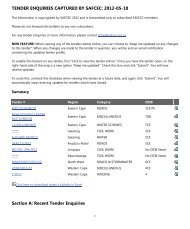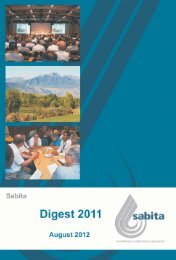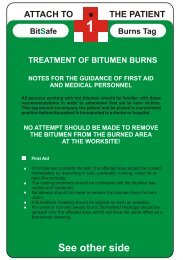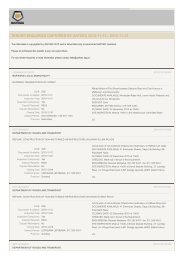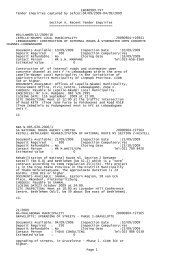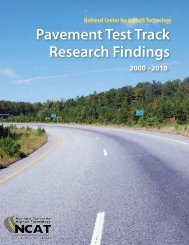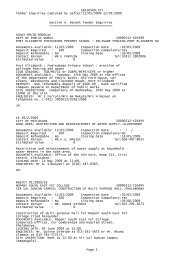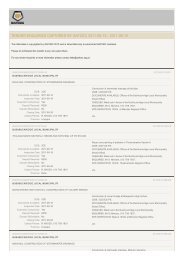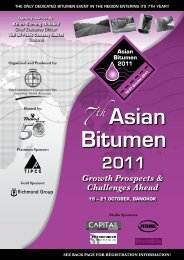DIGEST 2006 - Sabita
DIGEST 2006 - Sabita
DIGEST 2006 - Sabita
You also want an ePaper? Increase the reach of your titles
YUMPU automatically turns print PDFs into web optimized ePapers that Google loves.
Graded stone seals<br />
The seals that are being proposed<br />
as generic low cost holding actions<br />
on a road are typically made up of<br />
a modified emulsion binder,<br />
combined with a “slightly” graded<br />
stone aggregate, such as a<br />
combination of a 6.7 and 9.5mm<br />
stone, or even a 4.75 and 6.7mm<br />
stone. The graded effect of the<br />
stone aggregate, together with the<br />
Figure 3: Efficient use of graded stone and emulsion<br />
binder for sealing cracks<br />
low viscosity of the emulsion to fill<br />
the cracks, achieves a result that<br />
is not obtainable with conventional<br />
surfacing systems (see figure 3).<br />
Conventional seals<br />
Apart from their ability to apply<br />
graded stone seals, the machines<br />
can be used for any of the<br />
commonly known single or double<br />
seals using up to 19mm sized<br />
aggregates and conventional or<br />
modified binders.<br />
Since the arrival of their first unit<br />
two months ago, a range of seals<br />
totalling in excess of a 100,000 m 2<br />
have already been completed.<br />
These applications varied from<br />
emulsion single and double seals,<br />
(also using latex modified<br />
emulsions) on municipal road<br />
networks, as well as 80/100<br />
penetration grade double seals.<br />
While the on board computers<br />
control the binder temperature<br />
and maintain the application rates<br />
of binder and aggregates within<br />
tight tolerances,<br />
(while digitally<br />
recording the road<br />
condition before<br />
and after<br />
application), there<br />
are also a number<br />
of other practical<br />
aspects which<br />
make surfacing<br />
with these units<br />
advantageous<br />
vis-à-vis<br />
conventional<br />
chip-and-spray<br />
techniques,<br />
namely:<br />
• Minimal aggregate loss in the<br />
early life of the seal due to<br />
instantaneous application<br />
with the binder;<br />
• Cost-effective sealing of<br />
roads requiring remedial<br />
treatment on distressed areas<br />
only;<br />
• Reduced traffic disruption due<br />
to fewer construction vehicles<br />
on the work site;<br />
• More versatile and suitable<br />
for sealing restricted areas<br />
due to the high<br />
manoeuverability, for<br />
example at intersections;<br />
98



